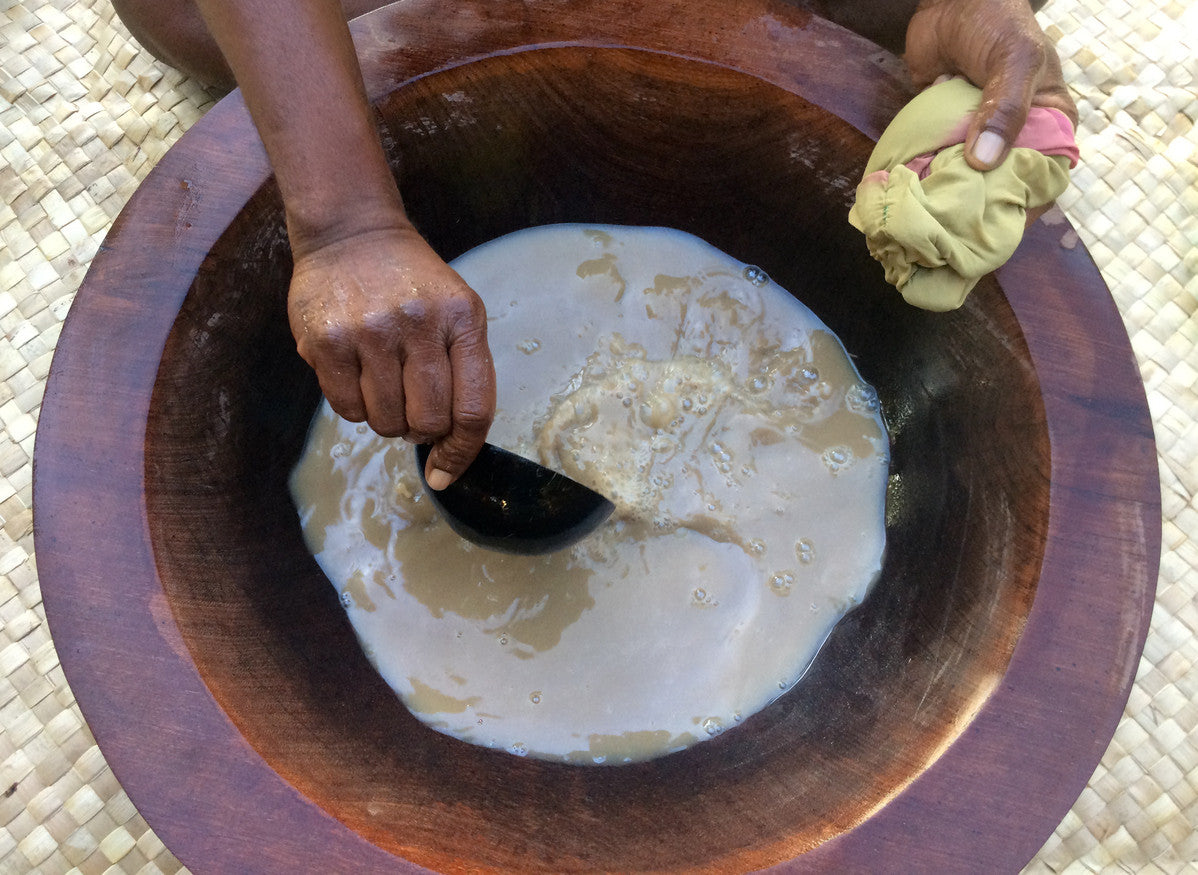
There are many drinks on the market today. Smoothies, juices, coffees and teas are very popular around the world. This new trend is focused on better health, emotionally and physically.
There is one drink, however, that has been around for centuries. It is known to have quite a few benefits for health and even spirituality.
This drink is kava. Its history is as rich as its taste. Well, kava may not taste rich to everyone. In fact, it may taste bitter. But on the history of kava, everyone can agree on its richness. The history of kava drinks is a fascinating story, and has impacted the way we drink kava today.
Recommended by the American Academy of Family Physicians, kava has reportedly out performed St. John’s Wort and valerian.
Kava, By Any Other Name
There are many names used for kava drinks within the Pacific Islands. The most common name is kava kava. And of course, the scientific name is Piper Methysticum. But in Hawaii it is referred to as “awa” and with one letter change, it is called “ava” in Samoa.
Residents in Fiji call it saqona. Other names include milik, kew, kao, and wurzelstock.
No matter what the name, kava’s discovery and its distinct traditions remain the same.
Kava Drinks Discovered
It is not recorded exactly how Pacific Islanders discovered kava many centuries ago. What history has recorded is Captain Cook’s discovery of it on his voyage to the Pacific Islands during the 18th Century. Apparently, this is when outsiders learned about kava.
Cook reported to people on his discovery of this “intoxicating pepper plant”, that the roots are used to mix with water and to be shared.
Kava was told to be a drink used in social gatherings such as ceremonies or rituals.
Ceremonies and Rituals

In the South Pacific, kava drinks are served before every important ceremony or ritual. It is served in joyous times, when people offer up prayers for good outcomes. It is also served in times of sadness such as when someone passes away.
Kava is known as a sacred drink in every type of ritual and it has been considered the national drink of the islands in the Pacific.
If there is a wedding, kava is served before the wedding. If it is planting season, farmers drink kava while they pray for a good crop. Fisherman drink kava in hopes of catching a lot of fish.
In some cases, kava is offered to Gods as a sacrifice. Medicine doctors drink kava to help them discover solutions to the illnesses of their patients. Even mediums use kava to seek information. It has been reported kava can open your mind and your conscious to achieve awareness.
Ceremonial use of kava is not as popular today in some of the Islands of the Pacific. It is believed the Samoan culture is one of the few that still holds high regard for kava and its benefits.
Kava Drinking Etiquette
When attending a ceremony on an Island that is steeped in tradition, there is an etiquette to follow. It is always an excellent idea to take a gift of kava root to the leader of the village as an offering of appreciation.
Women should wear a sarong and everyone stays seated throughout the ceremony. It is customary the Village Chief or Leader take the first drink. Once he is finished, everyone else may drink. Once this is complete, song and dance begin.
How to Drink Kava
The history of kava and its relation to ceremonies and rituals also includes a specific way to take the drink. For example, in Fiji, kava root is ground and mixed with water. It is then strained through fabric, sometimes by twisting a t-shirt.
The liquid strained is put into a communal bowl.
“BULA” is chanted, reports National Geographic. This is a way of saying hello or wishing positive things to come your way. After they say “Bula”, you take a big drink out of the communal bowl of kava.
Each culture within the Pacific Islands has their own cultural etiquette when it comes to drinking kava. Parts of their pre- and post-drinking routines may vary, but they all share the actions of showing gratitude and respect for the Gods.
Kava remains a drink used by Pacific islanders. The difference, it is used on a more frequent basis rather than only before rituals or ceremonies. Today, kava drinks are available for purchase in bars and restaurants. It can also be purchased in stores and online.
Just as many people include a cup of coffee in their morning routine, or a mixed drink in the evening, kava is used regularly and often daily by many by locals living in the Islands.
Kava Today
In America, kava use is becoming more and more popular in recent times. It has very little connection to ceremonies or rituals, however. Most kava drinkers in America are using it for its relaxing benefits.
Kava is purchased from a retail site, either physical or online. It can be purchased in powder form or in tea bags. There are also kava candies and strips, as well as root, paste or capsules.
When purchasing kava in these forms, it is important to find kava that is the purest. Often, kava is mixed with other herbs to reduce the potency. With a little research, you can find pure kava from reputable retailers.
The American Kava Association sets exacting standards for those selling kava. Find retailers, bars and even kava farmers who are certified by the American Kava Association.
If making your own kava drink is not what you are looking for, there are places you can go to enjoy the drink and have it served to you.
Kava bars are proving to be popular among regular users in America. A kava bar is simply a brick and mortar site that prepares kava drinks for its customers for them to enjoy immediately.
Kava bars provide a relaxing setting for people to gather socially and enjoy a drink that can have both physical and emotional benefits.
Drinking kava can have positive effects on your mind and your physical health. Whether you choose to visit a kava bar or make your own kava drinks, you will find yourself relaxed but with mental clarity.
Drinking kava is no longer used for just ceremonial events. You can incorporate it into your daily or weekly routine to lower stress and increase awareness.
